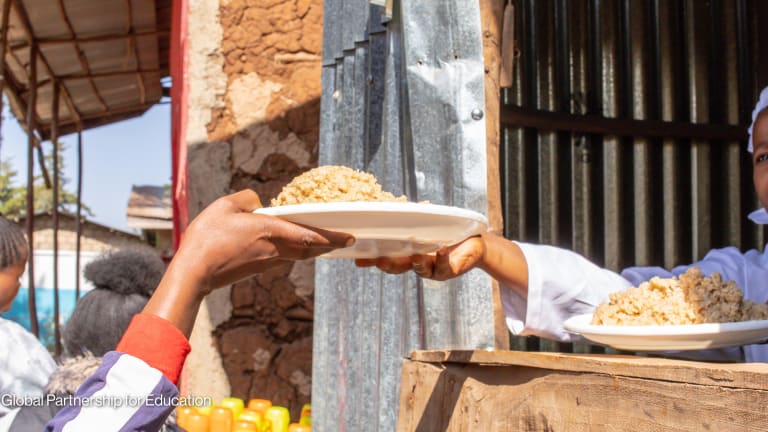
Nutrition has many, well-known faces: healthy babies in the first 1,000 days of life, smiling lactating and pregnant mothers, focused children learning in school. Food security is a lesser-known but equally important face. And the two are intrinsically linked.
When people think about good nutrition, they think about balanced diets. Food pyramids. When people think about food security, they often think about the lack of it: hunger due to the absolute lack of food, packages of grains and peanut pastes given to people in times of famine. This type of food distribution is still the most common and critical form of food assistance, especially where there is a natural or man-made disaster. But that’s not the whole picture.
See more #FeedingDev articles:
• Let's change the food security conversation on aquaculture
• The UK's food security champion: We must tackle demand
• Food security and nutrition in Africa’s cities
• Food security: 3 major private sector approaches
In the most basic, traditional sense, food security is about ensuring all children, women and men are able to eat enough nutritious food each and every day, to lead a healthy and productive life. Ensuring this, when the most vulnerable children and families have no safety net, is the hard part. But it’s the part that matters because chronic household food insecurity is a key risk factor for child undernutrition, especially in the most vulnerable communities around the world.
The world is capable of feeding itself yet undernutrition is a key factor in the deaths of more than 2 million children under the age of 5 every year. Evidence tells us that undernutrition can significantly affect the development potential of a nation. But in many countries, the political will and resources needed to turn knowledge into action is still lacking. Increased production of nutritious food crops, improved household incomes, investment in rural infrastructure, better distribution systems, feeding programs and land reform are among the measures that can end hunger and improve nutrition.
The recipe for good nutrition — and, consequently, food security — is predictable, sustainable and good access to the right nutrients at the right time. But achieving food security requires structural reforms of the global aid and economic architecture. These include increased investment in small-holder agriculture, national social protection programs that help vulnerable households to weather shocks and protect food consumption, market access for goods from developing economies, an end to subsidies, and an end to conditionalities that limit expenditure on essential services. Until these reforms are carried out, food assistance will be necessary.
As long as it is necessary, World Vision and others are committed to ensuring food assistance programs contribute to food security and good nutrition. We've been doing food assistance for a long time, and despite some weariness that it feels like we are handing out food forever, there has been much progress in terms of “how” we do it.
We focus on programs like Food for Work or Food for Assets, which provide food assistance to engage families and communities in making changes so they will not need food assistance in the future. Participants, otherwise too hungry and malnourished to work and be productive, have their immediate food needs satisfied while they work on projects that will help them recover from shocks and become food secure in future. This frees them from having to devote their time and energy on securing the most basic components of their diet, so they can have the means to make their meals more nutritious, adding vegetables, protein or fruits.
It’s working in places like remote, mountainous Baringo in northern Kenya, where more than 180 schoolchildren now have a garden in their school, full of nutritious fruit and vegetables; they have a nursery where they learn more about how to grow food; and they have access to water-harvesting tanks for the dry season. They have all this because a Food for Work program supported their mothers and fathers to prepare land, plant trees, build fences, construct tanks and build stone beds and nurseries.
Join the conversation at our LinkedIn group!
When done right, food assistance programs improve food security programs. When done right, food security programs improve nutrition. But for this to happen, an integrated approach is needed. World Vision believes ending hunger and improving food security and child nutrition should be a headline indicator for food security global goals, strategies and processes.
For more information, visit www.wvi.org or follow World Vision’s child health campaign Child Health Now at www.childhealthnow.org.
Want to learn more? Check out Feeding Development's campaign site and tweet us using #FeedingDev.
Feeding Development is an online conversation hosted by Devex in partnership with ACDI/VOCA, Chemonics, Fintrac, GAIN, Nestlé and Tetra Tech to reimagine solutions for a food-secure future from seed and soil to a healthy meal.








